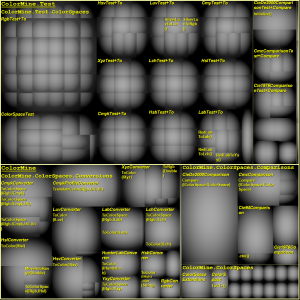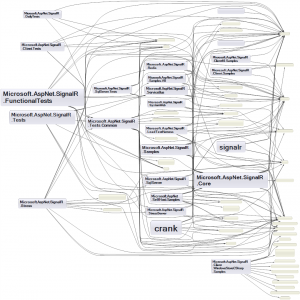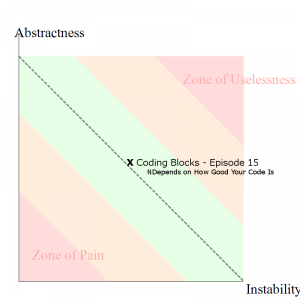Podcast: Play in new window | Download
Subscribe: Apple Podcasts | Spotify | TuneIn | RSS
This week we’re discussing NDpend, a static analysis tool for .NET.
Triage your biggest problems, Prioritize your refactoring, and CYA with real metrics and trend lines.
We also discuss hidden nuggets, Pintrest-envy, and we pour another one out for google reader.
News
- Check out our YouTube channel!
- Angular 2.0 is coming!
- Beginning XML in SQL Server With Don Wert
- Thanks for the reviews RyGuyWelch and glenster75!
NDepend Overview
- We received a free license for NDepend, and decided to check it out
- What is NDepend and what does it do for you?
- Had some stability issues initally, Allen’s problem turned out to be Visual Studio Tools for Git
- Build Server license/version – perfect for your CI server
- Tons of functionality
Features
- Circle at the bottom right seems to be the quick key to navigating or the NDepend Menu in VS
- Dashboard – quick glance at all the top items you should be trying to attend to in your project/solution
- graphs changes over time (between snapshots)
- Queries and rules explorer are very powerful – nice that you can actually see and modify the Linq that’s used to create the various reports – makes this incredibly flexible
- View Reports of any number of coding issues…
- Complexity report is a real eye opener
- ILCC – IL Cyclomatic Complexity – anything over 20 should probably be refactored
- Joe’s post Static Analysis of Open Source .NET Projects
- Dependency graphs – neat
- Dependency Matrix
- Diff snapshots – Compare different versions of your code
- Trend charts – track your progress!
- Code metric view gives you a sense of the size of the various areas of your code
- Import Code Coverage from tools like dotCover
- Visual NDepend Standalone, VS Plugin, and Build Versions
What we love
- Awesome rules, categories include
- Architecture and Layering
- Code Quality
- Dead Code
- Design
- Naming Conventions
- Object Oriented design
- Visibility
- Love the Dependency Graph – ability to highlight objects (size) based off lines of code, dependencies, etc
- Generated html report doesn’t have the functionality of the dashboard, but it is convienient
- The Abstractness versus Instability Diagram helps to detect which assemblies are potentially painful to maintain (i.e concrete and stable) and which assemblies are potentially useless (i.e abstract and instable).
- Abstractness: If an assembly contains many abstract types (i.e interfaces and abstract classes) and few concrete types, it is considered as abstract.
- Stability: An assembly is considered stable if its types are used by a lot of types of tier assemblies. In this conditions stable means painful to modify.
- The big benefit is tracking your project over time
- Very friendly UI: Clicked “Generate a graph of…” brought up screenshots of how it works
- Checkbox for “Recent rules violated”
- Create trend chart
What we’re not so crazy about
- Occasionally awkward interface, shows the code for the rules rather than a description
- Wish it had easy support for assembly segregation – (could do separate reports)
- Doesn’t honor the Visual Studio theme
- The UI windows show up somewhat randomly (VS issue?)
- Tons of info: Multiple monitors is pretty much a necessity for using NDepend
- Irritating that double-clicking a column header in the grids shrinks down the column to nothing rather than auto-expanding
- When looking at the reports, mousing over a row pops up the details, although I wish it would lock to the row selected (if you have selected a row)
- Manual installation process
- Not seamless, needs to “attach” to a solution
- Requires .NET 3.5 (for backwards compatibility?)
What we’d like to see in future versions
- Reports that are more “shareable”
- Analysis of more than .NET code, i.e. HTML, Javascript, etc
- Github and source control history integration!
Resources We Like
- Pluralsight, of course
- Static Analysis of Open Source .NET Projects
- The Steve Balmer Ipsum Generator
Tips of the Week
- Fill out forms automatically
- conemu – command shell replacement
- Chrome – Move multiple tabs at once with control or shift keys














